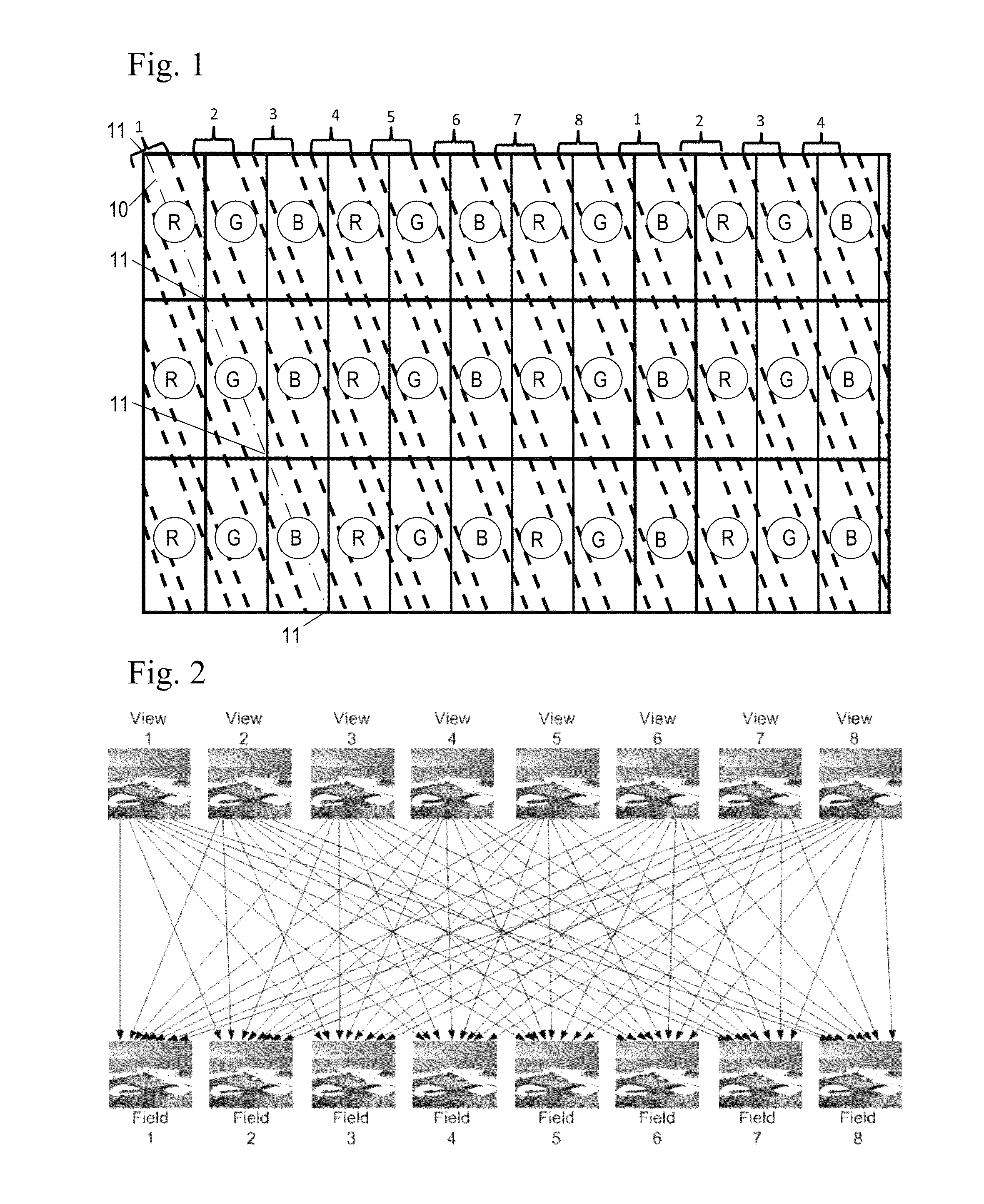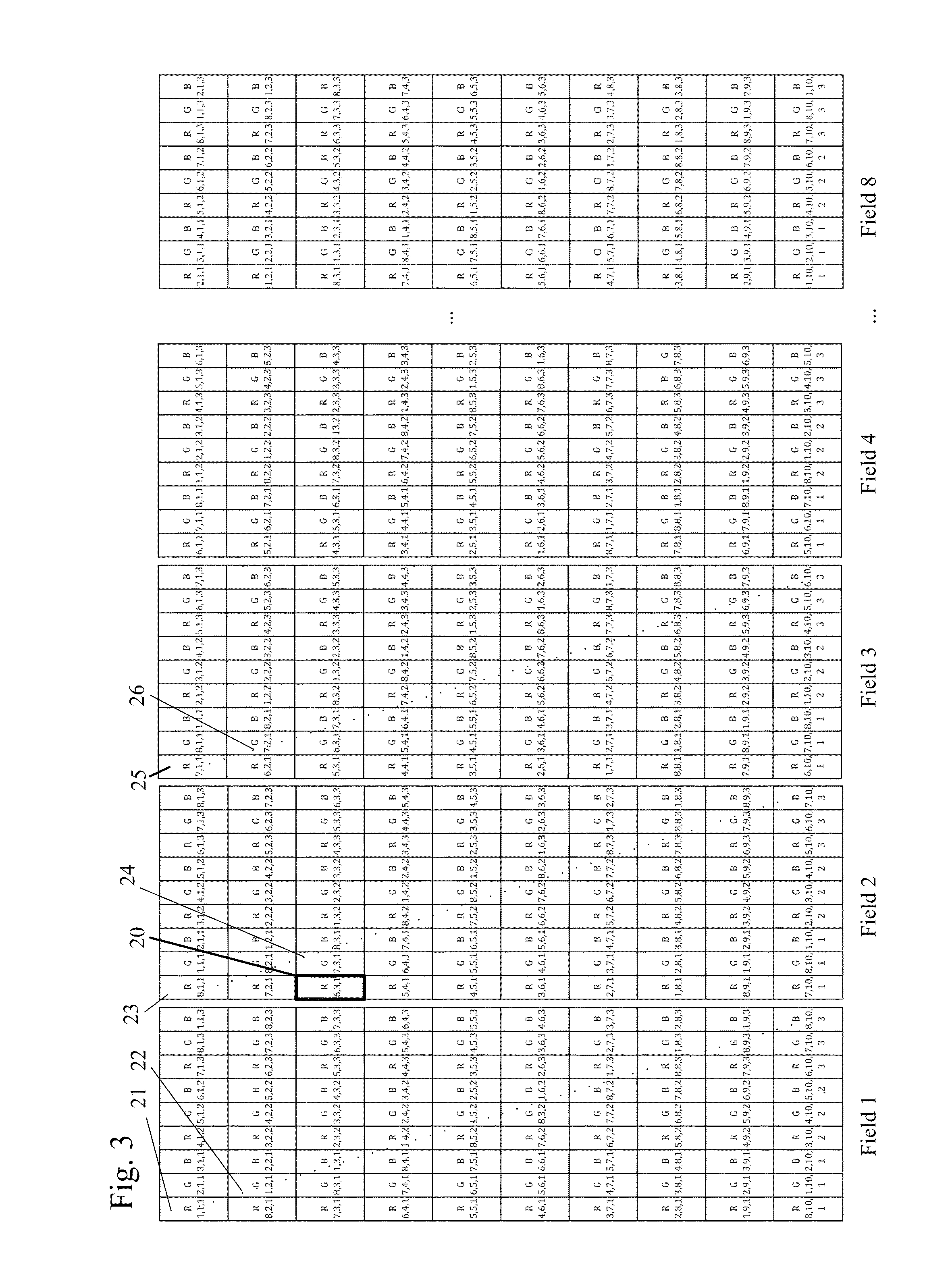Image data placement method for a time multiplexed autostereoscopic display
a time multiplexed, autostereoscopic display technology, applied in optics, instruments, electrical equipment, etc., can solve problems such as horizontal resolution loss
- Summary
- Abstract
- Description
- Claims
- Application Information
AI Technical Summary
Benefits of technology
Problems solved by technology
Method used
Image
Examples
Embodiment Construction
[0025]The co-pending parent application to this continuation-in-part, published as U.S. 2010 / 0118218, describes an autostereoscopic display whereby slanted lines of light are flashed in rapid succession behind a transmissive display, which is generally a liquid crystal display panel (LCD), while the LCD displays a series of images in succession, with one image being displayed during each flash. Typically the light sources used to create each set of lines have several independently controlled sections, which are used to cause different sections of each line to turn on and off in succession, in order to follow the scan of the LCD from top to bottom, as is explained in U.S. Pat. No. 5,410,345 and the aforementioned parent application 2010.0118218.
[0026]The LCD has a resolution of M by N pixels. Each pixel on an LCD display is typically made up of three parts, called elements—a red element, a green element, and a blue element—arranged in a horizontal row within each pixel. This is illus...
PUM
| Property | Measurement | Unit |
|---|---|---|
| depth | aaaaa | aaaaa |
| depth | aaaaa | aaaaa |
| depth | aaaaa | aaaaa |
Abstract
Description
Claims
Application Information
 Login to View More
Login to View More - R&D
- Intellectual Property
- Life Sciences
- Materials
- Tech Scout
- Unparalleled Data Quality
- Higher Quality Content
- 60% Fewer Hallucinations
Browse by: Latest US Patents, China's latest patents, Technical Efficacy Thesaurus, Application Domain, Technology Topic, Popular Technical Reports.
© 2025 PatSnap. All rights reserved.Legal|Privacy policy|Modern Slavery Act Transparency Statement|Sitemap|About US| Contact US: help@patsnap.com



